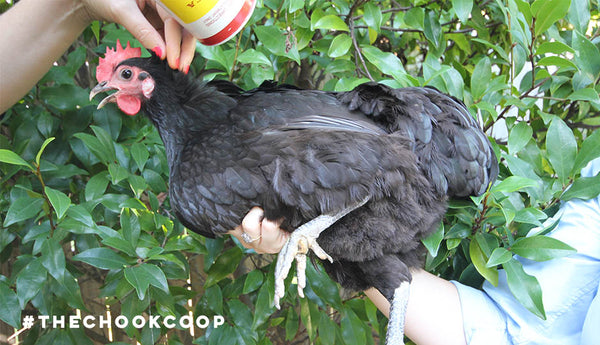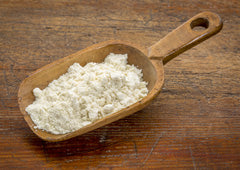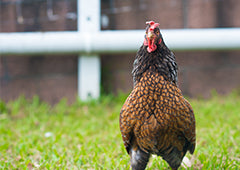Have you noticed your feathered friends are looking a little bare? A few less eggs in the egg basket? This could mean that your ladies and gentlemen are moulting! Why do Chickens Moult? Moulting is a natural cycle that both hens and roosters go through in the course of their lives. It allows chickens to shed any old, worn feathers and replace them with shiny new ones! It is also an essential time in which their reproductive organs can rest and rejuvenate - they need a well-deserved break from all their hard work.
What Causes Moulting? The top three causes for moulting are:
- Lessening hours of daylight – the coming of winter
- Their egg laying cycle has finished – their organs need to rest
- Stress – something in their environment is depriving them of one or more essential elements
When will your Chicken Moult? Baby Chicks: As baby chicks develop you should expect four cycles of moulting to occur:
- 1-6 weeks
- 7-9 weeks
- 12-13 weeks
- 20-22 weeks
Adult Chickens: Fully-grown hens and roosters can be expected to moult twice a year:
- Autumn (March-May)
- Spring (September – November)
What To Expect: Moulting can cause some chickens to look unhealthy and lose weight. However, the immune system gets neglected during this time as the chicken is putting all energy, proteins and nutrients into the production of new feathers. That's why it is essential that chickens are cared for more extensively during the moulting seasons.
The Top Five Tellers of a Moulting Chicken:
- Bald spots
- A dull comb
- Moodiness
- Reduced or pause in egg production
- Increased appetite for protein
What to do During Moulting: It is essential that slight changes be made to a chickens diet during the moulting seasons. Feathers are made of 80-85% protein; therefore, their production uses almost all the protein consumed by the chicken. This causes the hens to stop, reduce size or reduce quantity of egg production during the moulting season, as protein availability is scarce. To aid your chickens during the moulting months it is essential that you increase the right forms of protein in their diet. Have a sticky beak at ways to give your moulting chickens a protein boost here!
From moulting season to heatwaves in summer, all year round we all want to do an eggcellent job when caring for our feathered friends. It's essential that you've got the right expertise you need to raise happy, healthy chooks. Did you know 67% of chicken keepers surveyed experienced a chicken health or behaviour issue in the first 12 months that they didn’t know how to handle?
Cluckily, Chickenpedia have created a brilliant Chicken Healthcare Course that includes everything you need, including what to look for in an unhealthy chicken and how to support your egg-laying hens to flourish. I highly recommend their beginner-friendly courses to all my readers!
You can also prepare for the challenges each season brings thanks to their Weatherproof Chickens course. It is a complete guide of everything you need to keep healthy chickens through the seasons (which is more than you think!) with a great set of checklists and downloads to keep. Dangerous conditions including dehydration and frostbite can be avoided with the correct information and actions. Whatever the weather, this course will help you keep your chickens happy and healthy!
Check out Chickenpedia today. As a member, you will also get access to the ALL of their chicken courses!


















